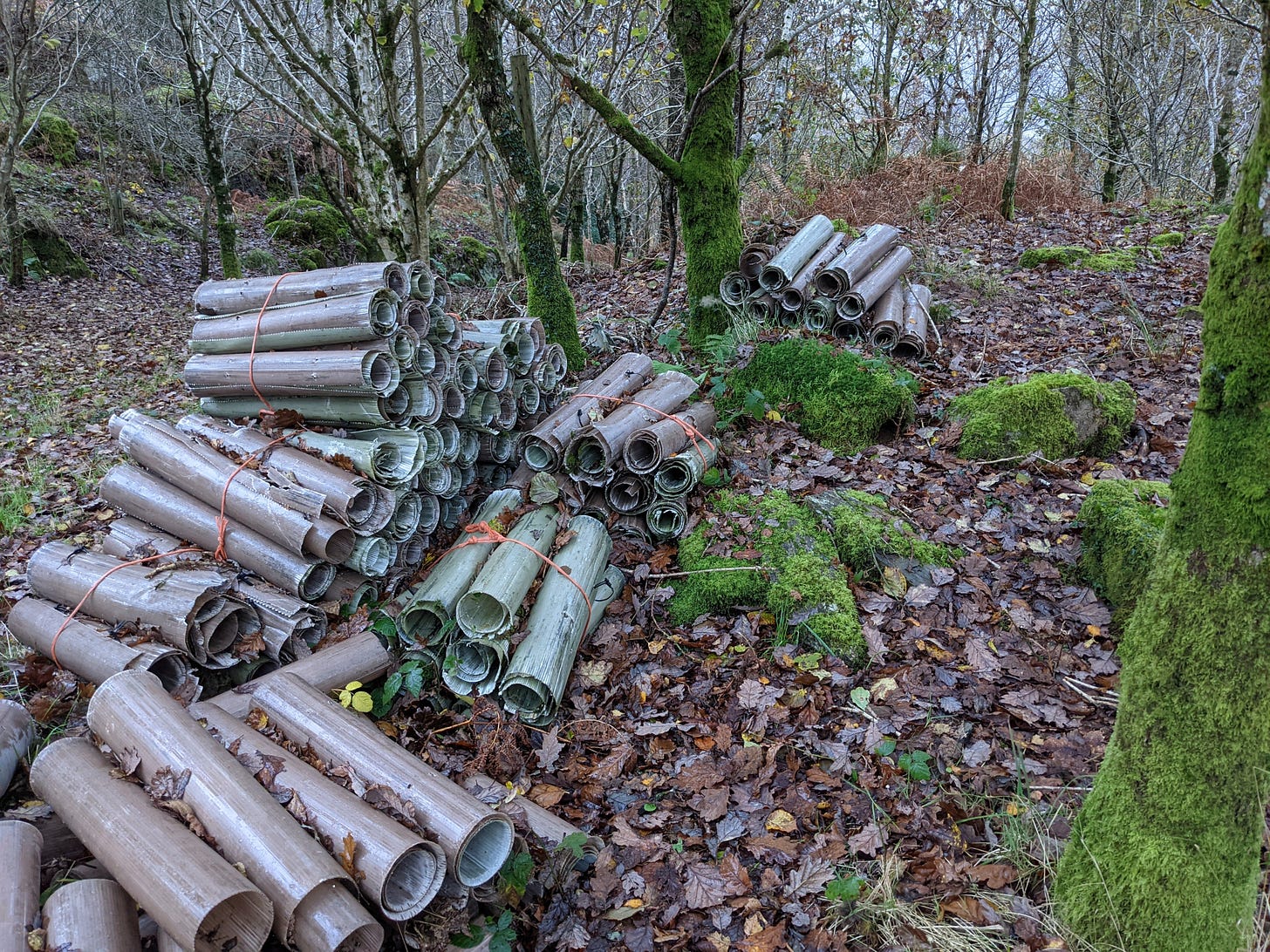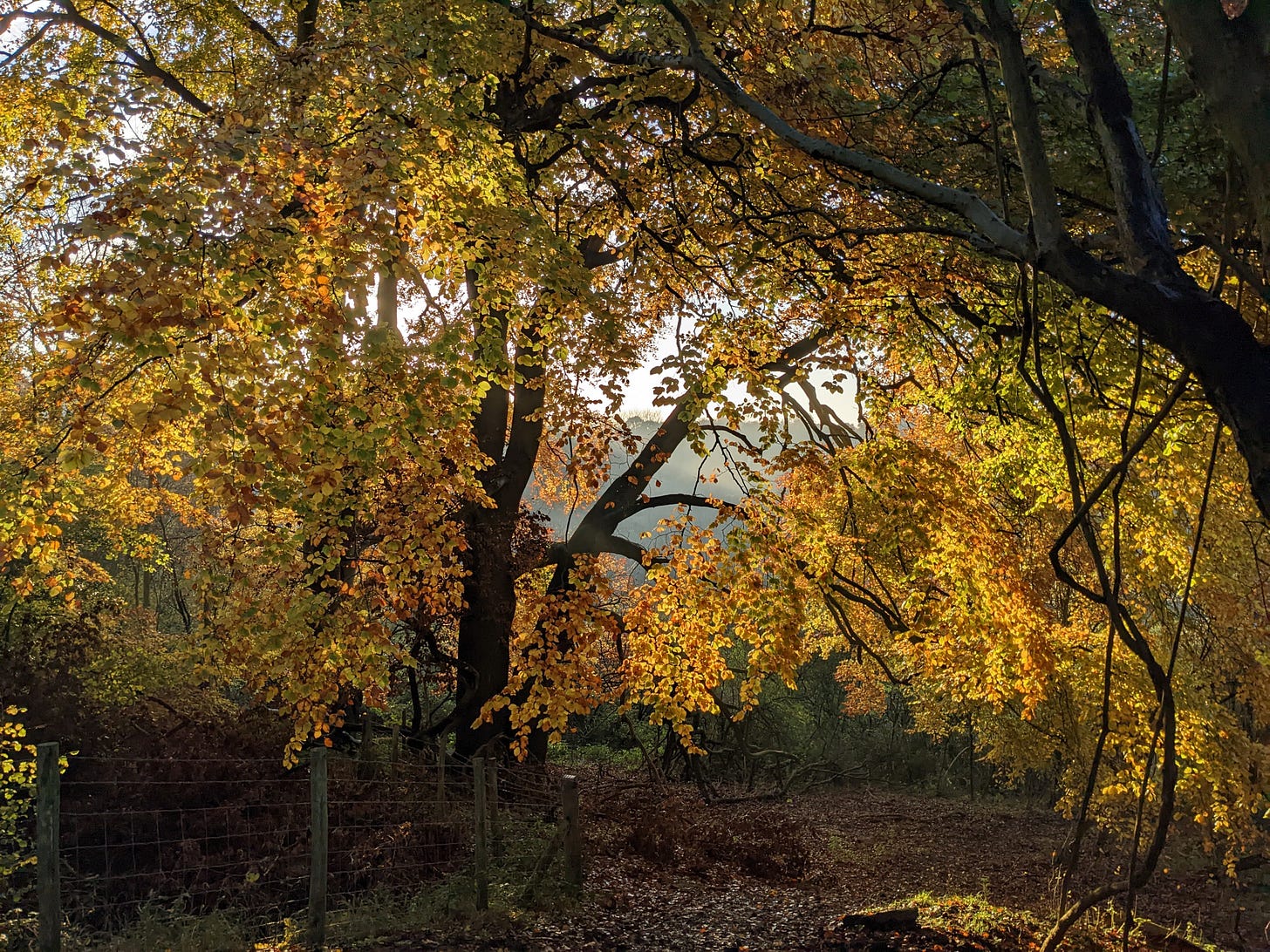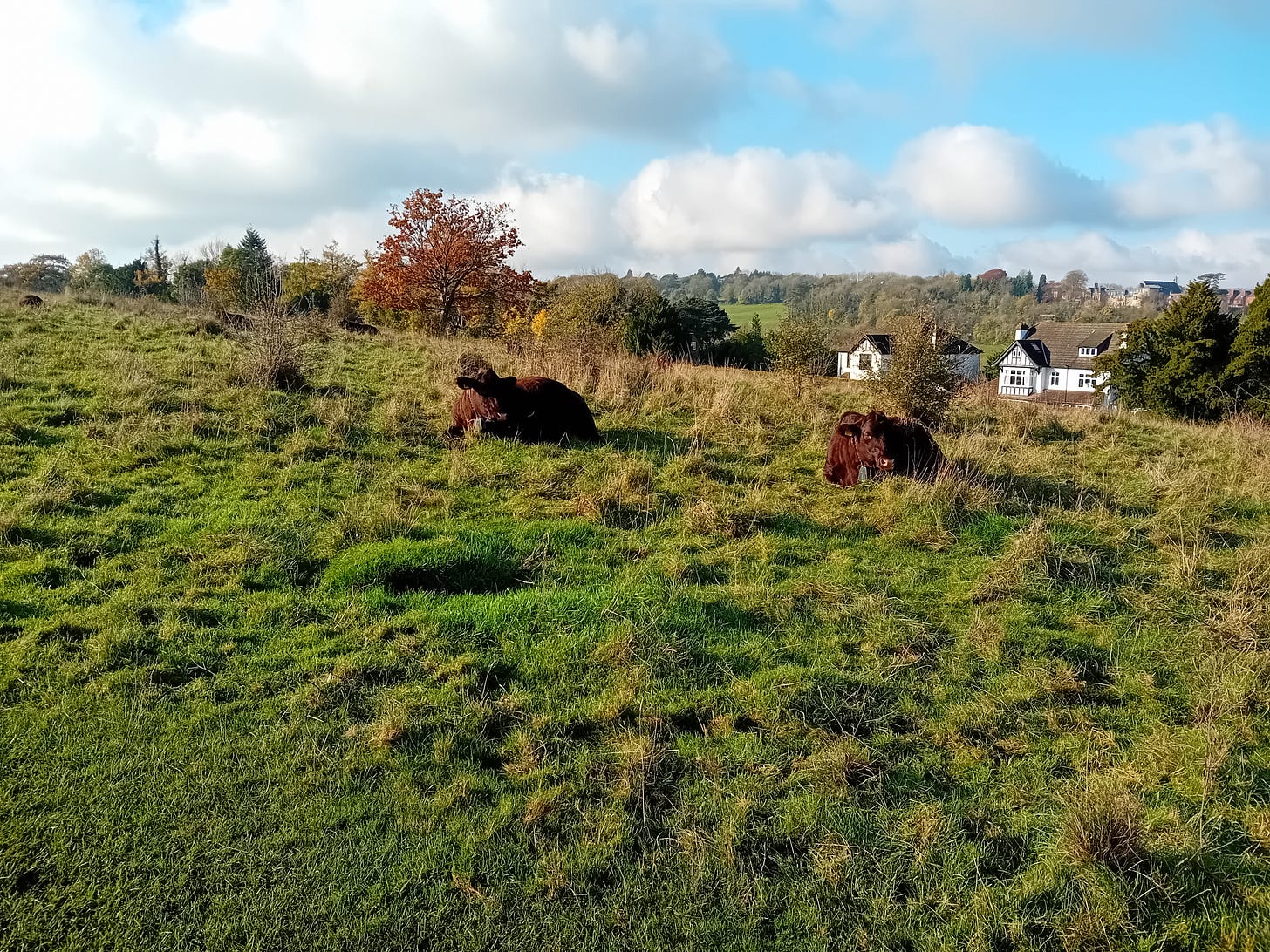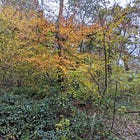What trees need
On planting trees not plastic, and ensuring young trees are properly cared for
The last time I came to Happy Valley it was summer and my approach across Farthing Down was filled with skylark song and the buzz of insects. It’s much quieter in mid-November and even though the sun has put in an unexpected appearance this morning, there is no-one else about. The Downs are a popular place with dog walkers and runners and I would usually expect to exchange ‘Hellos’ with several other visitors on my walk across them – there’s something about this place which encourages people to greet each other in a very non-London way - but today I have the place to myself for once.
The only other mammals I see are the herd of cows used for conservation grazing. I find evidence of their presence in the form of several large cow pats before I spot the herd itself. Most of them are sitting down, quietly chewing their cud in the sunshine. They are large, brown sturdy-looking creatures who completely ignore my presence even when I have to walk very close to one who has chosen to sit right on the path.
The temperature drops as I leave the openness of the Downs and head down into Devilsden Woods where the brightness of the sunshine is replaced by the golds and oranges of Autumn leaves, some still clinging to tree branches but most now scattered across the ground. It’s coppicing season – the time of year when we cut back sections of the hazel woods here to encourage regrowth. Coppicing is one of my favourite conservation volunteering tasks, especially on a day like today when the sun is shining, and the woods are in their Autumn finery. The others have arrived before me and the fire is already burning so the familiar smell of wood smoke greets me as I approach the coupe we’re working on this year.
So much of our volunteering activity is taken up with trees. As well as coppicing, we spend a lot of time removing trees from places they shouldn’t be growing such as the heathlands on Addington Hills. When I first started conservation volunteering over a decade ago, I thought I’d spend most of the time planting but in fact, it’s something we do only rarely. Most of our work is aimed at creating the conditions which allow plants to regenerate and thrive naturally rather than putting in new plants. But around the country, landowners, community groups and local councils have planted millions of new trees in recent years. There’s increasing recognition of the role trees can play in helping to tackle the climate and biodiversity crisis and much of this planting is supported by Government grants or by schemes aimed at offsetting carbon emissions.
On road verges and the edges of existing woodlands, in parks and fields, pretty much anywhere you go around the country you’re likely to find evidence of this new planting, often in the form of rows of green plastic tubes. Nationally, millions of plastic tubes must have been planted alongside all those new trees. It’s a bitter irony that our efforts to create carbon stores rely so much on a material whose production is a major source of carbon emissions. While some of these tubes are intended for re-use, only a small proportion will be collected and used again. The rest, like the single-use ones, will be left to disintegrate and wash away, adding to the increasing problem of micro-plastics in our soils and watercourses.

It's true that many young trees won’t survive without protection from the nibbling teeth of sheep, deer and other mammals but there are alternative – biodegradable - materials available. Some more enlightened organisations, such as the Woodland Trust, have now made commitments to using these instead or are reverting to practices that would have been common before the plastic guards were invented – fencing off newly planted areas in an attempt to keep out as many predators as possible and/or planting huge numbers of trees and accepting that not all of them will survive. Fencing plays an important role in coppicing too. Our final task at the end of each coppicing season is to put a fence around that year’s coupe to give the new growth the best chance to thrive.
As another winter tree planting season begins, more plastic tree guards will go into the ground and meanwhile, there is the legacy of many years of their use. It makes me sad to walk through areas of young woodland and see decades-old broken plastic casings still lying around or clinging to the lower trunks of trees. I find it even more upsetting to come across rows of plastic tubes where most contain nothing more than dead twigs, evidence that for some people the act of planting alone is sufficient, an act of faith, a prayer for forgiveness.
We cannot just plant trees and abandon them to their fate. To grow healthily, young trees need water. They need space and light. They need access to sufficient nutrients, the same nutrients that other plants around will also be competing for. That’s why we’ve spent some of our summertime volunteering days removing the grasses, nettles and cow parsley which threatened to swamp trees that had been planted the previous winter, or watering trees. These are less photogenic, less easily quantifiable activities than tree-planting but they’re just as vital.
The phrase ‘right tree, right place’ comes up a lot in discussions around tree planting, sometimes without any real thought as to what it means in practice. But even if the right tree is planted in the right place with the best of intentions, that’s not enough. That over-used phrase needs extending to ‘right tree, right place, right aftercare’ – far less snappy but a much better summary of what’s really needed.
To finish….
…a few things I’d like to share:
More trees, not more plastic: Friends of the Dales (FotD) have produced a great infographic to illustrate the problems with plastic tree guards. As FotD point out, the issues raised in this infographic are relevant to tree planting anywhere, not just in the Yorkshire Dales. Their website also includes a short animated film about a teenager investigating why so many plastic tubes are used and researching the alternatives.
A film about fungi: I’ve mentioned the writer Merlin Sheldrake a few times in previous posts and I’m a big fan of his book about fungi, Entangled Life, so I’m excited to see that the short film featuring some of his discoveries is now available to watch on the BBC iplayer. I missed it when it was on at the IMAX cinema earlier in the year so I’m looking forward to watching it now.
The benefits of coppicing: If you want to learn more about coppicing and why this is such an important part of our conservation volunteering, I’d recommend reading the first piece I ever posted on Substack this time last year





A great post Ruth, it was a really positive mood when the Woodland Trust changed their policy, but as you say it needs to be standard practice. And thank you too for the Merlin Sheldrake tip off. I was gutted to miss it at the imax (I had a ticket but then couldn’t make it) - so this will be a real treat.
I like the phrase 'the right tree, the right place, the right aftercare' I see so many trees that have been planted and are being strangled by the plastic ties securing them to their supports.